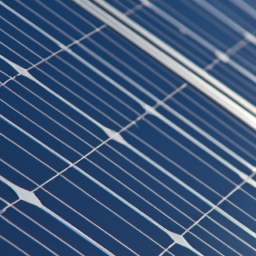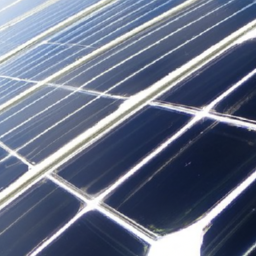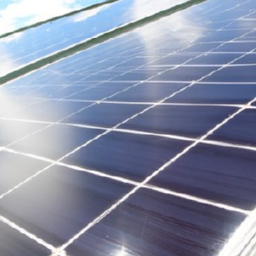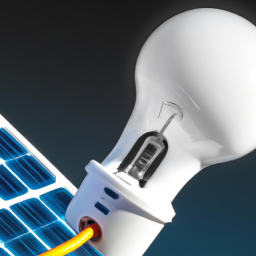Hey there! Have you ever wondered how much solar power you need to run essential appliances in your home? Well, you’re in luck! In this article, we’ll dive into the world of solar power and break down the numbers for you. Whether you’re looking to power your refrigerator, air conditioner, or even your entire home, we’ve got you covered. So, let’s get started and find out just how much solar power you need!
Curious to learn more? In this article, we’ll explore the factors that determine the amount of solar power required, such as the energy consumption of your appliances and the availability of sunlight in your area. We’ll also discuss how to calculate your solar power needs and explore different options for solar systems to meet your energy requirements. Whether you’re considering going solar or simply want to better understand how to optimize your energy usage, this article will provide you with all the information you need. So, stay tuned and let’s uncover the world of solar power together!
Determining your energy needs
Calculating the power consumption of your essential appliances
To determine how much solar power you need to run essential appliances in your home, you first need to understand the power consumption of each appliance. This can be found on the label or in the user manual of the appliance. The power consumption is usually measured in watts (W) or kilowatts (kW). Make a list of all the essential appliances you want to run on solar power and note down their power consumption.
Identifying the number of hours your appliances will be in use
Next, determine the average number of hours each appliance will be in use per day. For example, if you use a refrigerator for 8 hours, a fan for 4 hours, and a television for 3 hours, your total usage per day would be 8 + 4 + 3 = 15 hours.
Determining the total watt-hours required for each appliance
To calculate the total watt-hours required for each appliance, multiply the power consumption of the appliance by the number of hours it will be in use per day. For example, if your refrigerator consumes 150 watts and will be in use for 8 hours, the total watt-hours required for your refrigerator would be 150 x 8 = 1200 watt-hours (or 1.2 kilowatt-hours).
Repeat this calculation for each appliance on your list and add up the total watt-hours required for all appliances. This will give you an estimate of the daily energy consumption of your essential appliances.
Understanding solar panel efficiency
Exploring the different types of solar panels
There are several different types of solar panels available on the market, including monocrystalline, polycrystalline, and thin-film panels. Each type has its own advantages and disadvantages in terms of cost, efficiency, and aesthetics. It’s important to research and compare the different types to determine which one best suits your needs.
Evaluating the efficiency ratings of solar panels
Solar panel efficiency is a measure of how much sunlight the panel can convert into usable electricity. The efficiency rating is expressed as a percentage. Higher efficiency panels can generate more electricity from the same amount of sunlight, which means you will need fewer panels to meet your energy needs. When comparing solar panels, look for higher efficiency ratings to maximize the energy output of your system.
Calculating the total wattage needed based on panel efficiency
To calculate the total wattage needed for your solar power system, divide the total watt-hours required for your essential appliances by the efficiency rating of the solar panels. For example, if your appliances require a total of 10 kilowatt-hours per day and you have solar panels with an efficiency rating of 15%, you would need 10 kilowatt-hours / 0.15 = 66.67 kilowatt-hours (or 66,670 watt-hours) of solar panel capacity.
Accounting for sunlight availability
Assessing the average daily sunlight hours in your location
The amount of sunlight available for solar power generation varies depending on your location. It’s important to assess the average daily sunlight hours in your area to determine how much solar power you can expect to generate. This information can usually be found in weather databases or obtained from local meteorological services.
Considering factors like shading and weather patterns
In addition to the average daily sunlight hours, you also need to consider factors that may affect the availability of sunlight for your solar panels. Shading from trees, buildings, or other objects can significantly reduce the amount of sunlight reaching your panels. It’s important to choose a location for your panels that is free from obstructions to maximize their efficiency. Additionally, weather patterns such as cloud cover or fog can also affect the amount of sunlight available.
Determining the percentage of usable sunlight for solar power generation
After considering the average daily sunlight hours and potential obstructions, you can estimate the percentage of usable sunlight for solar power generation. Multiply the average daily sunlight hours by the percentage of usable sunlight to determine the effective daily sunlight hours. For example, if the average daily sunlight hours in your location are 6 hours and you estimate that 80% of that sunlight is usable, the effective daily sunlight hours would be 6 hours x 0.8 = 4.8 hours.
Sizing your solar power system
Calculating the total watt-hours needed per day for all appliances
To calculate the total watt-hours needed per day for all appliances, add up the total watt-hours required for each appliance as determined earlier. This will give you the total energy consumption per day.
Accounting for system losses and inefficiencies
Solar power systems can experience losses and inefficiencies due to factors such as wiring, temperature, and inverter inefficiencies. It’s important to account for these losses when sizing your solar power system. A common rule of thumb is to add 20-30% to your total energy consumption to account for these losses.
Determining the required size of your solar panel array
To determine the required size of your solar panel array, divide the total watt-hours needed per day (including losses) by the effective daily sunlight hours. This will give you the wattage of solar panels needed to meet your energy needs. For example, if your total energy consumption per day, including losses, is 15 kilowatt-hours and the effective daily sunlight hours are 4.8 hours, you would need a solar panel array with a wattage of 15 kilowatt-hours / 4.8 = 3.13 kilowatts.
Selecting the appropriate battery capacity
Calculating the energy storage capacity required
To determine the energy storage capacity required for your solar power system, multiply the total watt-hours needed per day (including losses) by the number of days of autonomy desired. Autonomy refers to the number of days your system can operate without sunlight. A typical value for autonomy is 3 days. For example, if your total energy consumption per day, including losses, is 15 kilowatt-hours and you desire 3 days of autonomy, the energy storage capacity required would be 15 kilowatt-hours x 3 = 45 kilowatt-hours (or 45,000 watt-hours).
Choosing the right battery type and technology
There are different types of batteries available for solar power systems, including lead-acid, lithium-ion, and flow batteries. Each type has its own characteristics in terms of cost, energy density, cycling capabilities, and maintenance requirements. It’s important to consider these factors and choose the right battery type and technology for your specific needs.
Determining the number of batteries needed for optimal performance
To determine the number of batteries needed, divide the energy storage capacity required by the capacity of the battery. For example, if the energy storage capacity required is 45 kilowatt-hours and the capacity of the battery is 10 kilowatt-hours, you would need 45 kilowatt-hours / 10 kilowatt-hours = 4.5 batteries. Since you cannot have a fractional number of batteries, you would need to round up to 5 batteries.
Understanding charge controllers and inverters
Explaining the role of charge controllers in regulating power flow
Charge controllers are an essential component of solar power systems. They regulate the power flow between the solar panels and the batteries, ensuring that the batteries are properly charged and preventing overcharging or damage to the batteries. Charge controllers come in different types, including PWM (Pulse Width Modulation) and MPPT (Maximum Power Point Tracking), each with its own advantages and efficiency ratings.
Choosing the appropriate charge controller based on system specifications
When choosing a charge controller, you need to consider the system voltage, the solar panel wattage, and the current capacity of the charge controller. It’s important to select a charge controller that can handle the maximum current and power output of your system to ensure optimal performance and protection of your batteries.
Understanding the function of inverters and selecting the right type
Inverters are responsible for converting the direct current (DC) electricity generated by the solar panels and stored in the batteries into alternating current (AC) electricity that can be used to power your appliances. There are different types of inverters available, including string inverters, microinverters, and hybrid inverters. Each type has its own characteristics in terms of efficiency, power output, and compatibility with different system sizes. It’s important to choose the right type of inverter based on your specific system requirements.
Considering backup power options
Exploring the need for backup power during cloudy days or system failures
Even with a properly sized solar power system, there may be occasions when you experience cloudy days or system failures that limit the amount of solar power available. In such cases, it’s important to have backup power options to ensure continuous power supply for your essential appliances.
Assessing the different backup power solutions available
There are several backup power solutions available, including diesel generators, battery backup systems, and grid tie systems with net metering. Each solution has its own advantages and disadvantages in terms of cost, reliability, and environmental impact. It’s important to assess your specific requirements and choose the backup power option that best suits your needs.
Determining the best backup power option for your specific requirements
When determining the best backup power option, consider factors such as the duration and frequency of power outages, the availability of fuel or grid connection, and your budget. Some backup power solutions, such as battery backup systems, may require additional investment but offer the advantage of being silent, emission-free, and able to store excess solar energy for use during peak demand or nighttime.
Estimating the cost of a solar power system
Researching the current prices of solar panels and other system components
To estimate the cost of a solar power system, it’s important to research the current prices of solar panels, batteries, inverters, charge controllers, and other system components. Prices can vary depending on factors such as brand, technology, capacity, and installation requirements. It’s also worth considering any available government incentives or rebates that can help offset the cost of your system.
Taking into account installation and maintenance costs
In addition to the cost of the system components, you need to factor in the installation and maintenance costs. The complexity of the installation, the size of the system, and any additional electrical work required can affect the installation costs. The maintenance costs include regular cleaning of the solar panels and periodic inspections to ensure optimal performance and longevity of the system.
Estimating the return on investment (ROI) for your solar power system
To determine the return on investment for your solar power system, calculate the savings on your electricity bills and any potential income from excess energy fed back into the grid. Compare these savings and income with the initial cost of the system to determine the payback period. In general, solar power systems have a payback period of around 5 to 10 years, depending on various factors such as energy consumption, electricity rates, and system size.
Finding reputable solar installers
Researching and contacting certified solar installation companies
When looking for reputable solar installers, it’s important to research and contact certified solar installation companies in your area. Check their credentials, certifications, and customer reviews to ensure they have the necessary expertise and experience to install your solar power system safely and efficiently.
Requesting quotes and comparing installation services
Once you have identified a list of reputable solar installers, request quotes from multiple companies and compare their installation services. Consider factors such as the quality of the components they use, the warranties offered, and the level of customer support provided. It’s also important to consider the installation timeline and any additional services they provide, such as maintenance or system monitoring.
Ensuring proper licensing and warranties for the installation
Before finalizing your decision, ensure that the solar installer is properly licensed and insured. This will give you peace of mind knowing that the installation will be done by qualified professionals and that you will be protected in case of any accidents or damages. It’s also important to review the warranties offered by the installer and the manufacturers of the system components to ensure proper coverage and support.
Conclusion
Summarizing the key factors to consider when determining solar power needs, it’s important to calculate the power consumption of your essential appliances, account for system losses and inefficiencies, and consider the average daily sunlight hours and shading factors in your location. Additionally, selecting the appropriate battery capacity, understanding charge controllers and inverters, considering backup power options, estimating the cost of the system, and finding reputable solar installers are crucial steps in designing and installing a solar power system for running essential appliances.
Accurate calculations and professional guidance are essential in determining the right size and components for your solar power system. By harnessing the power of the sun, you can enjoy the benefits of renewable energy while reducing your dependence on traditional grid electricity. With careful planning and consideration, you can determine how much solar power you need to run your essential appliances and take a step towards a more sustainable future.




